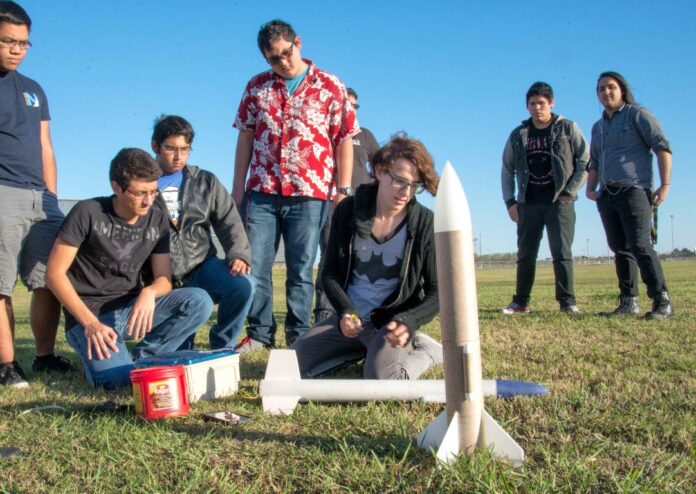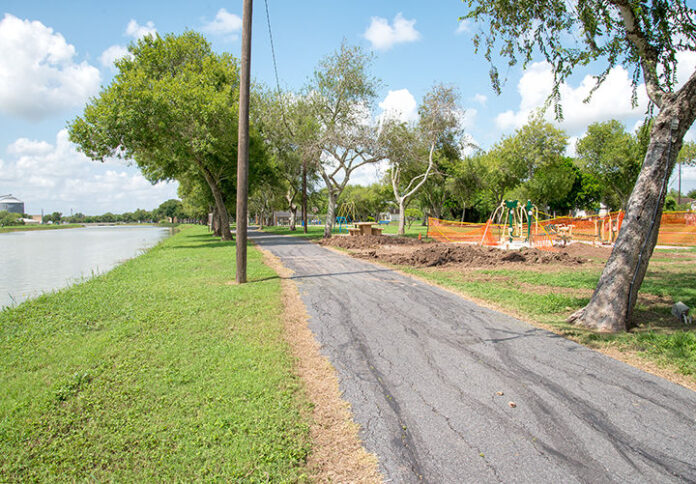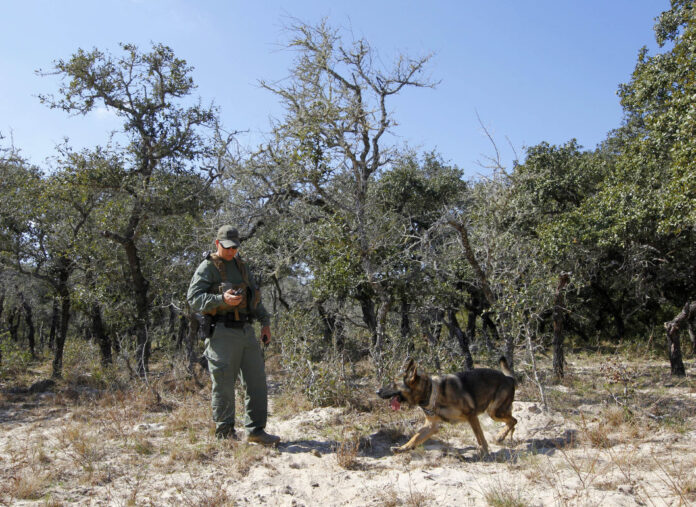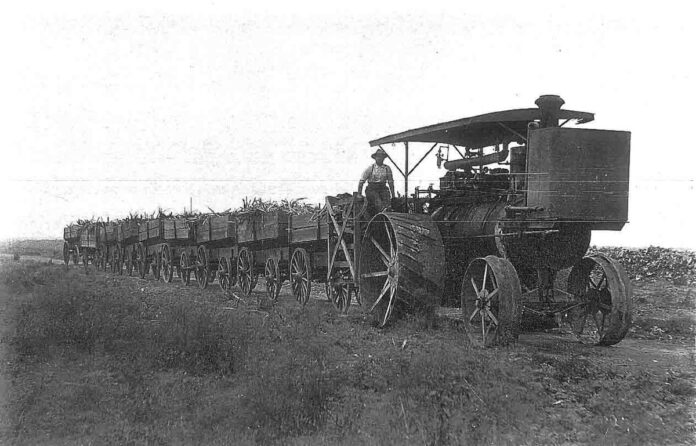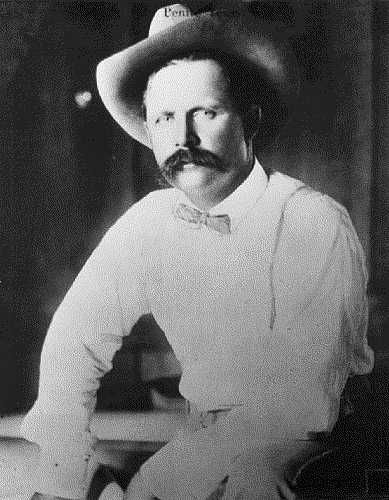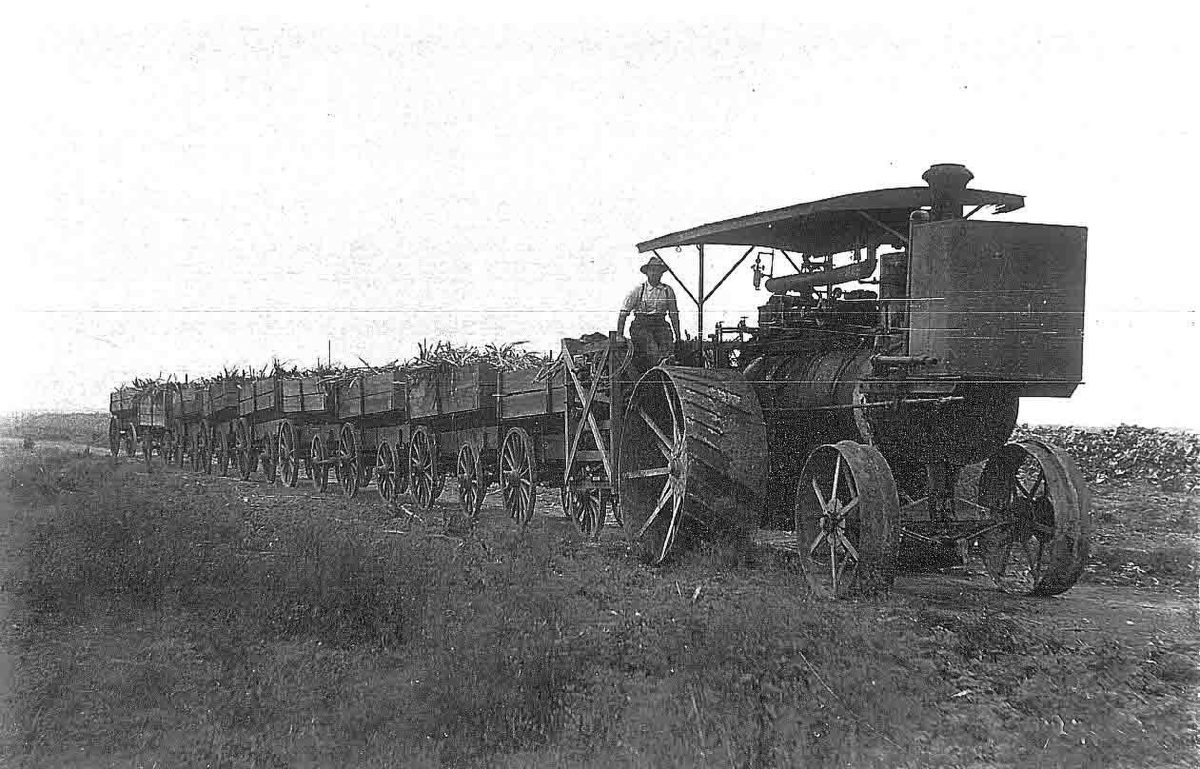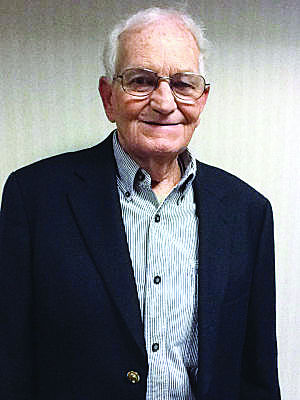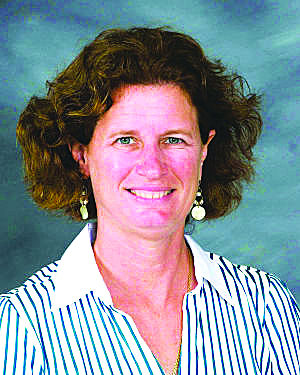FALFURRIAS — Igor sat quietly in the backseat of the pickup truck during the hourlong drive to Falfurrias from Border Patrol headquarters in Edinburg on Thursday morning.
The 2-year-old German shepherd graduated five months ago from the Border Patrol Canine Academy in El Paso, where Rio Grande Valley native Isaac David trained him to be his new search and rescue and cadaver dog.
David, 42, is one of the lead agents in the RGV sectors Border Patrol Search, Trauma, and Rescue (BORSTAR) Unit. “I love my job, and I feel really blessed to do this for a living,” David said. “We are some of the highest trained personnel in law enforcement, and we get to save people’s lives.”
BORSTAR was created in 1998 in response to the growing number of injuries to Border Patrol agents and migrant deaths along the border. David and Igor spend more than 60 hours a week searching for people lost in the vast ranchlands of Brooks County. They often find people suffering from exhaustion and dehydration after they are left behind by their group.
There are 25 BORSTAR agents in the RGV sector that also provide first aid and tactical search and rescue support for all federal, state, and local agencies in the area and anywhere else they are needed. Since its inception, BORSTAR agents have been deployed to assist in several natural disasters, including the mass flooding near San Marcos this year.
This past fiscal year (Oct. 1, 2014, to Sept. 30, 2015), Border Patrol agents in the RGV sector rescued 714 immigrants that had put their lives in the hands of coyotes, or human smugglers, as they tried to evade law enforcement and immigration authorities after crossing into the country illegally.
“Human smugglers are callous and dangerous individuals who are only concerned with making money,” stated RGV Sector’s Chief Patrol Agent Manuel Padilla earlier this month after a smuggler endangered the lives of five immigrants during a high-speed chase with police near Roma.
“They have no regard for the safety of the individuals who have entrusted them with their safety,” he added.
In fiscal year 2013, the RGV surpassed the Tucson sector with a record 154,453 apprehensions, making it the busiest sector in the country for illegal crossings. It has remained at the top for the past three years with more than a half a million people believed to be in the country illegally caught between the western edge of Starr County and the Gulf of Mexico.
The unprecedented number of unaccompanied minors from Central America that continue streaming in prompted an army of deputies, agents and soldiers from all over Texas to secure the northern shores of the Rio Grande last year.
About 4,000 federal, state and local law enforcement agents are part of this multi-agency effort also known as Joint Task Force-West South Texas Corridor, tasked with combating transnational criminal organizations, according to the CBP website.
This level of response is nothing new for David, who worked in Tucson multiple times during his 15 years working for the guys in green as they are often called in the field. For him, it’s not only about enforcing immigration laws it is also about saving lives.
As he drives northbound on Highway 281 on Thursday, he looks to his right and notices a group of buzzards circling around over the brush north of San Manuel, their silhouette, a dark contrast against the murky white sky still draped by the morning fog.
“When I see the buzzards flying around like that, I can’t help but wonder if there could be a person or a body out there,” David said.
He doesn’t keep count of the bodies or people he has rescued over the years but said he is sure they are in the hundreds. Most recently, he aided in the search of 20-year-old Everilda Chilel Lopez of Guatemala.
Lopez was abandoned by her smuggler on Jan. 2 as she traveled with a group of illegal crossers through Brooks County. The woman’s sister, who lives in Georgia, contacted authorities after the smuggler called the family and told them she was injured and couldn’t keep up.
Lopez’s body was found six days later by a rancher guiding a group of hunters, but Border Patrol kept looking for two others who were left behind by the same smuggler during the cold, rainy weekend following the New Year, according to Lopez family.
“When we get calls like that, it’s all hands on deck, but there’s been times in the summer when we have four or five rescues going on at the same time and we can’t bring resources all to one place,” David said. “Sometimes we have to move on and determine the search unsuccessful.”
More than 1,000 immigrants have died in the RGV sector in the past 10 years. County Deputy Sheriff Benny Martinez estimates that for every one found there are five who remain lost in the sandy brush and hostile landscape of South Texas.
Brooks County sheriff’s investigators along with Homeland Security Investigations have been hunting down the coyote that left Lopez wrapped in a black plastic bag some four miles southeast of the county airport on a private ranch before she died.
There are more than six million acres that are privately owned in South Texas, according to The South Texans’ Property Rights Association. As deaths mounted this year, the association called for a united front to secure the border, prevent immigrant deaths and protect property rights.
“Enough is enough. It is now time to stop the human suffering and demand with a single voice that the federal government do its job to secure the border, including enforcing current laws, reforming immigration laws and establishing a robust guest worker program,” said Susan Kibbe, the association’s executive director in a November news release.
“South Texas property owners cooperate with law enforcement at all levels, allowing access to their land to provide water location markers, and rescue assistance for victims of ruthless coyotes (human smugglers). Yet, landowners experience the horrors of injury and death faced by victims,” Kibbe added.
The truth is not all land owners cooperate with law enforcement all the times. Sometimes ranchers do not grant full access to their lands hindering border patrol’s efforts for search and rescue operations.
During Thursday’s ride along, David only had access to a few ranches. King Ranch, for example, one of the largest ranches in the world with more than 825,000 acres, denied Border Patrol access because of deer hunting season.
Some of these ranches charge thousands of dollars for guided hunting expeditions through the brush lands of South Texas inhabited by all kinds of game including, deer, antelope and wild hogs. The county airport is lined with private jets owned by some of these ranch owners.
As soon as David drove through the iron gates of Cage Ranch on Thursday, a man in a white pickup truck drove up and waved. In the next half hour, the same truck circled back twice, the man looking David’s way from a distance.
The truck’s four-wheel-drive was put to the test as the wheels skids down the sandy roads that lead to one of eight rescue beacons in the RGV sector. Igor grew anxious as the truck bounced on the sandy road.
Upon arrival, David opened the back door and the dog jumped out, immediately running toward the beacon and lifting his hind leg. David yelled out to him and the dog found another place to relieve himself.
The red solar powered beacons have a blue light that can be seen for miles and are strategically placed to help save immigrant lives, according to BP spokesman Omar Zamora. The one on Cage Ranch stands next to an electrical pole line often used as a landmark by smugglers to stay on track.
A sign in English, Spanish and Chinese hanging from the beacon reads, “If you need help, push the red button, help will arrive, do not leave the area.”
This is just one of the many tools used to locate people lost in the brush. The South Texas Human Rights Center has also helped to set up one hundred water stations throughout these migrant trails to help save lives. Agents also use numbered plaques bolted onto hundreds of water mills throughout the area to help locate people.
“There have been times when people call 911 and say we are at so and so watermill, and we know exactly where they are,” David said. “Landmarks are important resources when you are trying to locate people.”
David said the recent surge of law enforcement, although welcomed, has made his and Igor’s job a little more difficult because migrants are now being pushed farther out into the brush to avoid detection.
“It makes it harder for them and harder for us to find them alive or to find them deceased.” David said. “And they are not being educated on really how hard it is to make the journey.”

